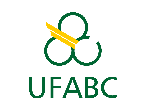Banca de QUALIFICAÇÃO: MARCUS VINICIUS FRANÇA
Uma banca de QUALIFICAÇÃO de MESTRADO foi cadastrada pelo programa.DISCENTE : MARCUS VINICIUS FRANÇA
DATA : 26/02/2021
HORA: 09:00
LOCAL: Por participação remota
TÍTULO:
Effects of sugarcane cultivation on the taxonomical and functional characteristics of benthic macroinvertebrates
PÁGINAS: 83
GRANDE ÁREA: Ciências Biológicas
ÁREA: Ecologia
SUBÁREA: Ecologia de Ecossistemas
RESUMO:
The streams of tropical regions are lotic environments that occupy some regions of the planet, they have great importance, mainly because they are fundamental environments for biodiversity, human welfare, health, recreation, scenic beauty among other uses. The dynamics and functioning of these streams are due to several factors that exert their balance, such as the presence of riparian vegetation in a preserved state, which plays an important role in physical integrity and influence on the dynamics providing allochthonous matter (energy, microhabitats and macrohabitats, etc.). However, some anthropic activities have expanded causing transformation and impacting these aquatic ecosystems. Several headwaters are close to agricultural activities, suffering from the effects of intensive agriculture, pointing out that the most growing crop is sugarcane, mainly in the State of São Paulo where it is being inserted close to water resources. Headwaters represent about 50%, or more, of a micro-basin, so conservation, monitoring and management are essential for balancing and maintaining the fresh water drainage network. In this perspective, this dissertation was prepared with the purpose of understanding what changes sugarcane crops have been causing in first order headwaters streams in the towns of São Carlos and Itirapina (SP, Brazil). The first chapter briefly described the history of sugarcane cultivation in Brazil, addressing the positive and negative points of this crop, also explains about the functioning and balance of streams with preserved conditions, finally, stands out about the fauna, specifically benthic macroinvertebrates, describing their importance, main groups and functions performed in aquatic ecosystems. The second chapter focuses on climate change, the possible alteration of air temperature and soil humidity variables, after the changes that intensive agricultural land use causes in microbasins forests compared to sugarcane microbasins in São Carlos-SP and Itirapina-SP. Chapter three presents the physical and structural changes after the application of two rapid habitat assessment protocols, in addition to a seasonal analysis (rainy and dry) in 3 microbasins that drain forested streams and 2 occupied with sugarcane cultivation. Chapter four is in the process of being elaborated, but it will address the impacts on the fauna of benthic macroinvertebrates, after the physical-l changes later when inserting a sugarcane monoculture close to streams. The results of the first chapter, highlight that some points need more research, understanding and understanding, about the subject of climate change on top of the factors addressed (air temperature and soil humidity), comparing sugarcane monoculture and other natural environments, because the difference between the variables were low. Regarding the second chapter, the physical-structural analysis and diversity of habitats, it was observed that streams near sugarcane fields are more subject to low stability of margins (dry season), change of sediment and substrate (rainy period), changes in the channel of streams (no distinction between periods), lack of arboreal vegetation protection (riparian zone) with open or semi-open bed, erosive points (rainy period). In view of this, both the possible climatic changes in important variables for the development of vegetation and sugarcane cultivation are of concern, for not understanding the effects of changes in soil use after inserting a sugarcane crop causes and what the changes in factors (temperature, humidity among others) in comparison with conserved environments, in addition to the physical-structural alteration generated in vegetation affecting the functioning and dynamics of first order streams. Therefore, we recommend the implementation of monitoring, conservation, and management of streams and, also, of sugarcane crops and changes in their practices.
MEMBROS DA BANCA:
Presidente - Interno ao Programa - 3047358 - RICARDO HIDEO TANIWAKI
Membro Titular - Examinador(a) Interno ao Programa - 1646410 - ROSELI FREDERIGI BENASSI
Membro Titular - Examinador(a) Externo à Instituição - LUIS CESAR SCHIESARI - USP
Membro Suplente - Examinador(a) Externo à Instituição - WELBER SENTEIO SMITH - UNIP




